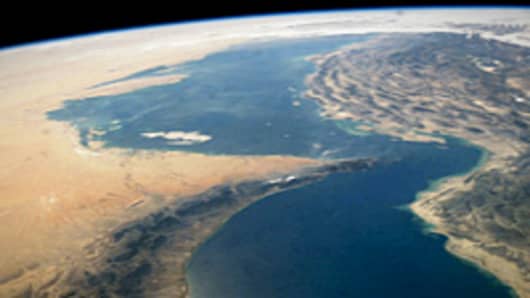Last week’s visit by a delegation of the International Atomic Energy Agency (IAEA) to Iran failed to produce results, leaving the international community, from traders to politicians, somewhat unsure about where it’s all going.
The standoff - an escalating tit-for-tat combination of sanctions and counter-threats - is unlikely to be resolved in the coming weeks. A case has often been made that the approach of the United States, blending diplomacy and sanctions, is hardly a convincing proposition for Iranian policymakers.
Iran has always maintained its nuclear program is peaceful and this claim was supported by a February 24 report in the New York Times, citing American intelligence officials as saying there was no evidence the country was building a nuclear bomb.
Iran’s ambassador to the IAEA reaffirmed the country’s commitment to working with agency as well, dispelling the recent denial of access to the nuclear site of Parchin as not “within Iran’s legal obligations with respect to the nuclear Non-Proliferation Treaty (NPT)”.
Fears are still growing of a unilateral strike by Israel on Iran, possibly as early as the summer, a move likely to force the United States to play a supporting role as an ally with vested interests in the region. Israeli authorities have, time and time again, insisted that all options remain on the table.
The country’s Prime Minister, Benjamin Netanyahu, will be heading to Washington on March 5 to meet with US President Barak Obama where he said that one topic of discussion “is, certainly, the continuing strengthening of Iran’s nuclear program”.
Just as is currently the case with Syria, not all of the world’s major powers are on the same page. China and Russia have repeatedly warned of the consequences of a strike on Iran, with Prime Minister Vladimir Putin describing them on Monday as “truly catastrophic”, the real scale of which is “impossible to imagine”.
Matthew Kroenig, a Stanton Nuclear Security Fellow at the Council on Foreign Relations, who also served as Special Advisor in the Office of the US Secretary of Defense, argues that a carefully-managed military strike against Iran’s nuclear program “could spare the region and the world a very real threat and dramatically improve the long-term national security of the United States”.
In a piece on “Why a Strike Is the Least Bad Option” in the latest edition of Foreign Affairs, Kroenig writes that the wider implications of a nuclear Iran, including relevant containment measures, would be “a costly, decades-long proposition” for the United States.
Surgical strikes, on the other hand, could destroy Iran’s nuclear facilities, combining precision-guided missiles with bunker-busting bombs, while helping Washington “limit civilian casualties in any campaign”. Kroenig does however not offer a strategy for what has been a stumbling block in effectively applying sanctions: bringing key stakeholders such as China and Russia onboard.
An Iranian response is inevitable, Kroenig makes clear, that can be softened by reassuring the government that only its nuclear program is being targeted. Iran has over past few months cited the closure of the Strait of Hormuz, serving nearly a fifth of the world’s traded oil, as one of its defensive strategies if attacked.
The country also controls a sizable proxy network, and could attack US interest abroad. With oil prices hovering near nine-month highs long before any actual action in the Strait, the fear of further disruptions could be mitigated through releases from the Strategic Petroleum Reserves (SPR) and “quietly encouraging some Gulf states of increase production in the run-up to the attack”.
Discussions on opening reserves and the impact of sanctions are believed to have been held at the latest meeting of the G20 in Mexico City. Treasury Secretary Timothy Geithner told CNBC on Friday that Iran can “do a lot of damage to the global economy”, and that the United States was weighing an SPR release.
Saudi Arabia, the world’s top exporter who is said to have boosted production in the last few weeks after a surprise cut in December, is also a member of the G20.
As 2012 rolls on, the fate of the stand-off remains as unclear as ever, perhaps to the benefit of those betting on a diplomatic resolution.


